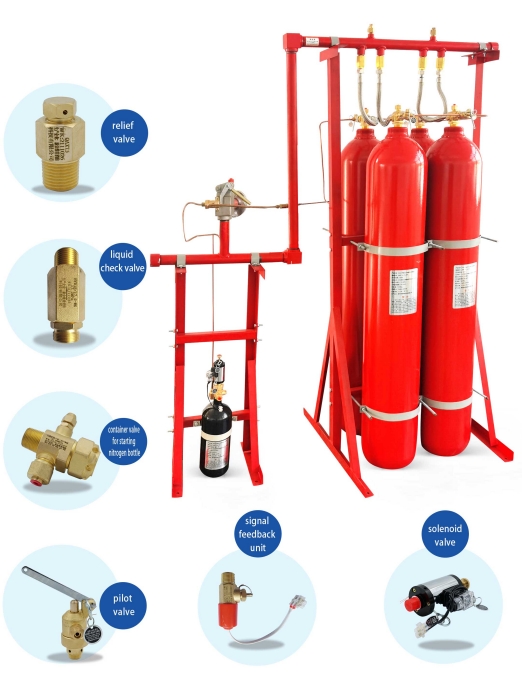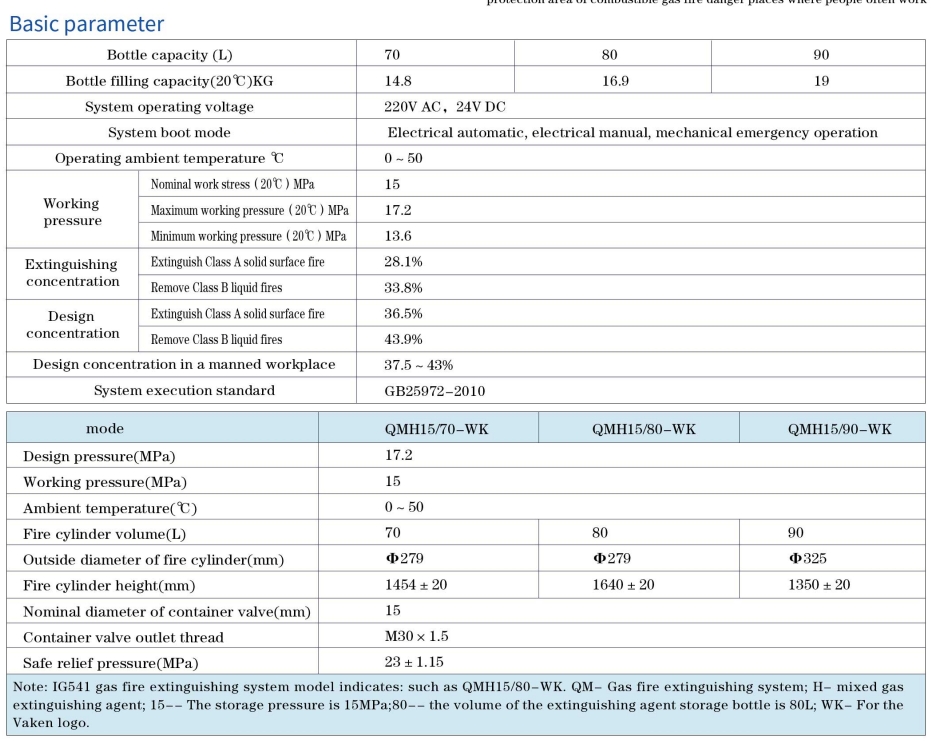

-
About Us
- ꀶ Our story
- ꁘ Contact Us
-
Products
- Gas fire extinguishing device series
- Aerosol fire extinguishing device
- High pressure water spray extinguisher
- Superfine dry powder extinguisher
- Foam fire extinguishing agent
- Water fire extinguishing agent
- Water-based fire extinguishers
- Civil building fire ventilation fan
- Factory workshop ventilation/fire valve
- Fire smoke exhaust system &valve
-
Support
- ꀳ Warranty
- ꄆ Download
- Technology
-
Cases
-
FAQ


-
About Us
- ꀶ Our story
- ꁘ Contact Us
-
Products
- Gas fire extinguishing device series
- Aerosol fire extinguishing device
- High pressure water spray extinguisher
- Superfine dry powder extinguisher
- Foam fire extinguishing agent
- Water fire extinguishing agent
- Water-based fire extinguishers
- Civil building fire ventilation fan
- Factory workshop ventilation/fire valve
- Fire smoke exhaust system &valve
-
Support
- ꀳ Warranty
- ꄆ Download
- Technology
-
Cases
-
FAQ
PRODUCT DETAILS
Overview
The IG541 Fire Extinguishing System uses IG541 as the extinguishing agent, a mixture of three gases: Nitrogen (N2), Argon (Ar), and Carbon Dioxide (CO2), mixed in the following proportions: 52% ± 4%, 40% ± 4%, and 8% +1%/-0.0%, respectively. It extinguishes fires through a physical mechanism by reducing the oxygen content in the air within the fire's combustion zone. The characteristics of IG541 include being colorless, odorless, non-toxic, non-corrosive, and non-polluting. It has an Ozone Depletion Potential (ODP) of 0 and a Global Warming Potential (GWP) of 0, making it an environmentally friendly fire extinguishing agent and an ideal alternative to Halon.
The system consists of an extinguishing agent storage cylinder group, container valves, check valves, selection valves, driving devices, distribution pipes, pressure-reducing devices, signal feedback devices, nozzles, and a control system.
Fire Extinguishing Principle
When the fire suppression system is in automatic control mode, and a fire occurs in the protected area, the fire detectors emit a fire signal. The alarm controller immediately activates both audible and visual alarms. The gas fire control panel receives two independent fire alarm signals and issues a linkage command to shut off related equipment. After a 30-second delay, the extinguishing command is issued, which opens the corresponding solenoid valve and activates the driving gas. The driving gas flows through the activation pipeline, opening the relevant selection and container valves, releasing the extinguishing agent, and extinguishing the fire.
Application Scope
IG541 is suitable for extinguishing the following types of fires:
- Electrical fires
- Liquid fires or fires involving molten solids
- Solid surface fires
- Gas fires where the gas supply can be shut off before extinguishing
It is suitable for protecting enclosed spaces, including typical areas such as:
- Electrical and electronic equipment rooms
- Communication equipment rooms
- National heritage protection sites including metal, paper, and silk-based cultural artifacts, as well as audiovisual and archival storage
- Flammable and combustible liquid storage rooms
- Locations with combustible gas fire hazards, where the combustible and supporting gases can be cut off before discharging the extinguishing agent
- Protection areas with regular human presence, etc.


Related Products
-

Weiken Non-Pressurized Ultra-Fine Dry Powder Fire Suppression System | Auto & Manual Start | Wall-Mounted Fire Extinguisher
Protect your space with the Weiken Wall-Mounted Ultra-Fine Dry Powder Fire Extinguisher. Designed for A、B、C、D、E class fires, this non-pressurized unit features temperature-sensitive automatic activation, ensuring rapid response in emergencies. Ideal for factories, warehouses, homes, and vehicles. Durable carbon steel body, safe, non-toxic, and certified for long-lasting performance – up to 12 years.¥ 0.00Buy now
-

980ml Water-Based Fire Extinguisher for Home, Car, Kitchen & Office | Portable & Safe for Oil and Electrical Fires
This 980ml portable water-based fire extinguisher is ideal for home, car, kitchen, office, and commercial use. It effectively puts out Class A, B, and E fires, including oil and electrical fires, with non-toxic, eco-friendly mist. Easy to use and safe for people and electronics, it’s a reliable solution for fast emergency response¥ 0.00Buy now
-

4KG Automatic Hanging Water-Based Fire Extinguisher for Lithium Battery Fires – Self-Activating at 68°C
The 4KG Automatic Hanging Water-Based Fire Extinguisher is designed to fight lithium battery fires. It activates automatically at 68°C, providing quick and effective suppression. Ideal for homes, offices, and warehouses using lithium-ion batteries, this eco-friendly extinguisher ensures safety with its water-based solution. Easy to install, compact, and reliable, it offers peace of mind for spaces at risk of battery-related fires.¥ 0.00Buy now
-
ꁇGas fire extinguishing device series
-
Single cabinet HFC-227ea extinguishers
-
Double cabinets HFC-227ea extinguishers
-
Pipe network HFC-227ea gas extinguishers
-
External stored pressure HFC-227ea gas
-
Suspended type HFC-227ea gas
-
IG 541 gas fire extinguishing equipment
-
QME 70 carbon dioxide fire extinguisher
-
IG 100 gas fire extinguishing equipment
-
Fire detection tube (Direct type)
-
Fire detection tube (Indirect type)
-
Perfluoroacetone(1230)fire extinguishing
-
Low pressure CO2 fire extinguisher
-
-
ꁇAerosol fire extinguishing device
-
High pressure water spray extinguishing
-
ꁇSuperfine dry powder extinguishing agent
-
ꁇFoam fire extinguishing agent
-
ꁇWater fire extinguishing agent
-
ꁇWater-based fire extinguishers
-
ꁇCivil building fire ventilation fan
-
Cabinet centrifugal fan
-
Backward inclined centrifugal fan box
-
Non volute cabinet centrifugal fan
-
HTF Axial flow fire exhaust fan
-
Mixed flow positive pressure blower
-
PYHL-14A Axial flow fire exhaust fan
-
GXF series inclined mixed positive fan
-
YDF Induction fan
-
DAF Axial flow fire exhaust fan
-
DCF Centrifugal fire exhaust fan
-
FZ fan protective cover
-
SDS Tunnel fan
-
GDF type pipeline centrifugal fan
-
Clean mute blower
-
Silent fan series
-
BLP overhead room ventilator
-
BLD ceiling duct ventilator
-
-
ꁇFactory workshop ventilation/fire valve
-
ꁇFire smoke exhaust system &valve





